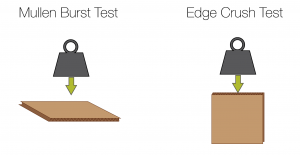

Package Safety
Package testing is a very important part of package safety. There are many different type of packages and package protection material that companies use, all of which have undergone some sort of testing. Things to know when learning about package safety: Will the package itself protect the product? How are packages tested? How efficient is this in finding flaws in material or protection?
New Materials
Every time a new package material is invented, it must undergo testing. There are many different types of tests that can be done. The most important packaging items that need to be tested are those that protect food, hazardous materials, medical supplies, etc. Chemical tests test the material by determining how well it can withstand certain environments and chemicals that it might come in contact with. It can also determine if the material leaks chemicals into the products it is protecting and what applications the material can be used for. These materials also need to be tested to determine how long it takes for the material to decompose if thrown away or how easily it is for them to be recycled. Shelf life testing must be done as well to know how long a package can last with slight changes in atmosphere and temperature as expected while sitting.
Physical Tests
There are also physical tests that can be conducted. Two popular tests include the Mullet Test and ECT Test. These tests must determine the durability and strength of the material by testing the bursting strength and top to bottom compression strength. Companies need to know if the protective material is going to last the trip to the customer or be able to hold in storage. Another test may be to see how easily the package can be opened. When a package says it is child resistant, that usually means that there was a test conducted to see if children and adults could open it in a certain amount of time. If most of them couldn’t, then the package is labeled as child resistant. The material must also be tested to find out what kind of temperatures and temperature changes it can endure. Wrapping needs to be tested to see how much it can stretch before if tears, and air bags need to be tested to see how much it takes to pop or tear a bag. Materials need to also be tested to see how moisture resistant they are. Some even have to be tested to see how much, or how little, air pressure it can take.
Shock Testing
One of the most important tests when shipping is the shock testing. This tests how much movement, vibration, touch, and hitting a package can take before it becomes defective. This is important for shipping because lots of movement occurs and most of it cannot be avoided. This means it is imperative that shipped packages are strong enough to last the trip. ShockWatch products provide the peace of mind that comes when reducing damage to products during shipping and handling.
The Right Choice
The testing of materials is what determines what applications they can be used for. If a company recommends a certain material for an application, you should know that they are making the right decision because the product has been tested and approved for your packaging needs.
Follow our Knowledge Base for the latest blogs on packaging supplies, equipment, case studies, and more ways to save money.
Don't forget to follow us on LinkedIn, Twitter, and Facebook and click those share buttons below if this post helped you.









